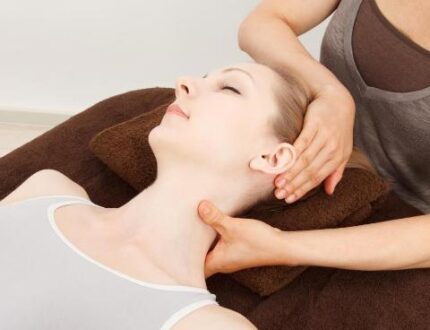Sternocleidomastoid muscle is considered as one of the most fascinating muscles in the body. A layman obviously totally unaware of its existence, as it sits innocently in the front of the neck. But most of us don’t know exactly about our muscles organs and bones. But there is another reason behind the fact that why we don’t know some of our body parts but some others, we know well . Because some body parts often hurt while some like Sternocleidomastoid muscle rarely hurt.
This is also true that if the sternocleidomastoid muscle hurts, it creates a tremendous amount of trouble for people in the form of headaches, facial pain, jaw pain and tension, and even stranger symptoms, like dizziness, brain fog, blurry vision, and even hearing loss. Usually, patients perceive this as a disagreeable sensation in the head with movement or an unsteadiness, and less often as a spinning sensation. In very severe cases, sudden stretching of this muscle can actually cause fainting. The dizziness can last from seconds to hours following stretching or using the SCM.
There are two interconnected muscles, which are combined together on our neck and make the bulkier sternocleidomastoid muscle (SCM), which allow our neck to turn and rotate the head in either direction. These bands of muscles are formed behind the ears and moving down to the frontal aspect of neck. From there, the sternal division attaches to the sternum or breast bone, and the clavicular division attaches to the clavicle or collar bone. Since it is just under the skin, it can be seen only if it pop out when one turn his head all the way to the opposite side.

Causes and Symptoms of Sternocleidomastoid pain and its Treatment
By following this article, you can find the relevant information about causes and symptoms of Sternocleidomastoid pain as well as some simple exercises that you can do easily at home.
Causes of Sternocleidomastoid Pain
The main function of this muscle in our body is to extends the head and turns it to the opposite side, so any position where the neck is held in an awkward position can create trigger points. In addition to movement , it is also an auxiliary muscle of breathing.
Some activities such as holding phone with shoulder, stomach sleeping, heavy lifting, falls and whiplash, keeping your head turned to one side , computer monitor off to one side , tight collar, stress and muscle tension or chest breathing , are some activities that might create the problem. Poor postures and especially bad head postures are considered real cause of this pain. This poor ergonomics include reading in bed, sleeping with too many pillows, having the head turned at side or backside for long period of time.
Symptoms of Sternocleidomastoid Pain
There are numerous symptoms Sternocleidomastoid Pain including:
- Headache caused by the persistent state of tension in the muscles of neck and cranial region. These headaches can lasts for up to half an hour or few days.
- The SCM can also cause migraine attacks that are characterized by disturbance in the visual acuity, muscle tenderness and headache.
- The Atypical facial neuralgia is characterized by pain in jaws, temple regions and cheeks.
- It can cause swelling, pain and soreness in throat. On the tongue base, you may feel pain with difficulty in swallowing food. This is due to the involvement of Sternal division trigger points.
- It can make your vision blurry, doubled or dimmed.
- Drooping eye lids, tearing and redness in eyes are also some classic symptoms of SCM pain.
- Unilateral sweating of forehead is also a common symptom of Sternocleidomastoid pain.
- Dizziness especially on head movement, car and sea sickness along with fainting and nausea on moving head are considered also symptom of Sternocleidomastoid pain.
- Although its rare but ringing and deafness in any of the ears can be caused by the involvement of clavicular division triggers.
- You can also feel pain in upper chest usually in upper chest bone.
Treatment
Tough its really painful but fortunately, treating it is not that difficult. By following some simple exercises and very light medication, you can defeat this pain easily.
Massage
Massage is considered as the most effective and easy way to get rid of this pain. You can do it easily by yourself, use your thumb and forefinger to squeeze the muscle gently. Different kind of rubs such as penetrex is helpful. It provides cooling and warm therapy during the massage.
Exercise
There are also some simple exercises that you can do easily like:
- Trapezius muscle is the one that can help in stretching the Sternocleidomastoid muscle. Ans stretching is really helpful in this case. Sit and tilt your head to left, then bend more to left, in order to stretch right trapezius. While bending, place the right hand under the right hip. Keep tilted at left and fall the head forward. Turn face to left and pull left hand to head’s right side for further stretching. For stretching of Sternocleidomastoid, tuck your chin after rotating head to right side, your opposite Sternocleidomastoid should feel the stretch.
- The pain in Sternocleidomastoid can also be healed by pushing the head forward. Place resistance by applying rotational force on the side of one jaw and then turning the head against resistance can also help. The hand or other means of resistance can be used. A cushion can be placed against a wall and then leaning against forehead to support body weight.
- General non-steroidal and anti-inflammatory pain relieving medications like ibuprofen, naproxen can be used to reduce the pain.
 Health & Care Information
Health & Care Information 

